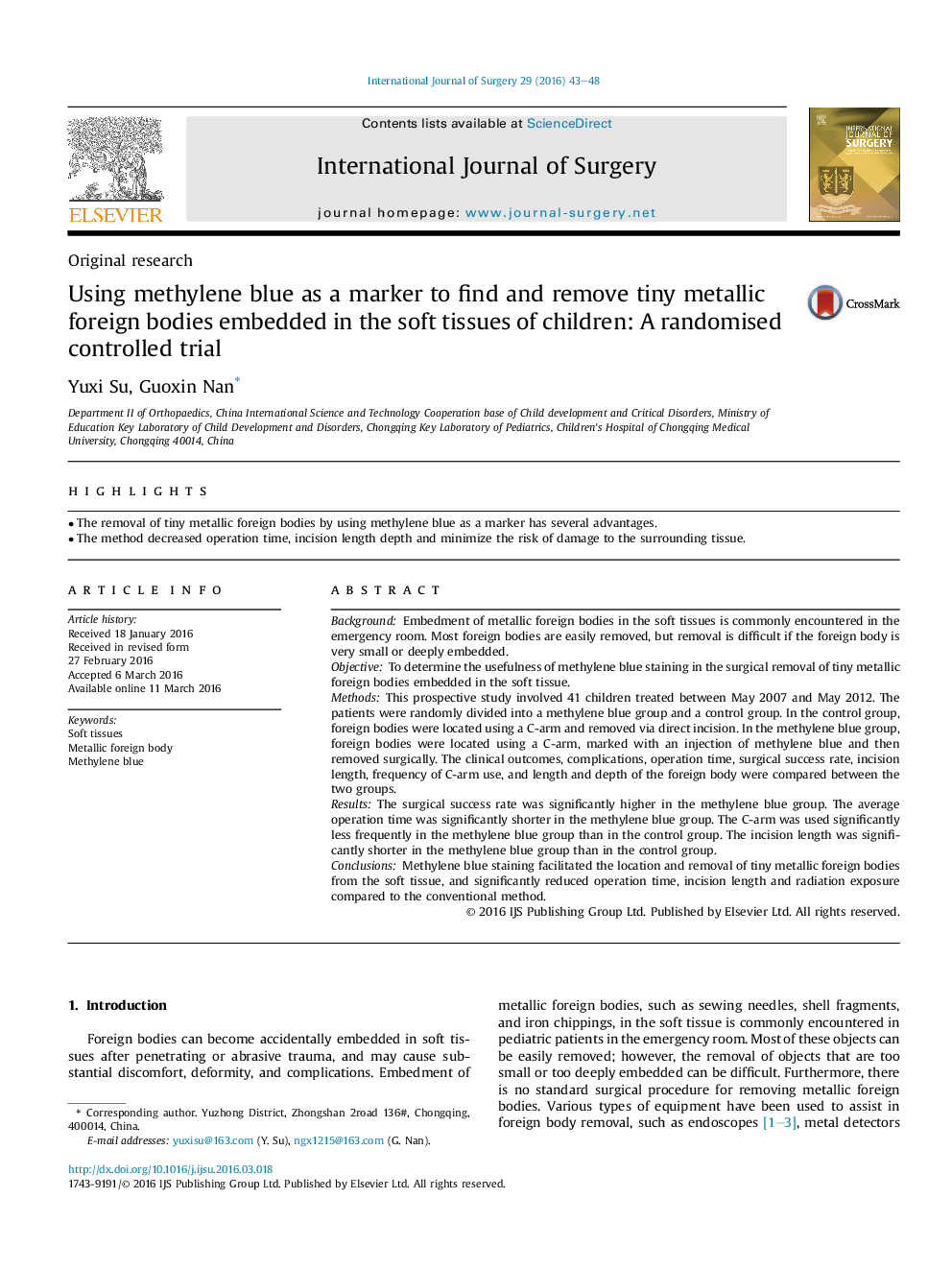| Article ID | Journal | Published Year | Pages | File Type |
|---|---|---|---|---|
| 4285424 | International Journal of Surgery | 2016 | 6 Pages |
•The removal of tiny metallic foreign bodies by using methylene blue as a marker has several advantages.•The method decreased operation time, incision length depth and minimize the risk of damage to the surrounding tissue.
BackgroundEmbedment of metallic foreign bodies in the soft tissues is commonly encountered in the emergency room. Most foreign bodies are easily removed, but removal is difficult if the foreign body is very small or deeply embedded.ObjectiveTo determine the usefulness of methylene blue staining in the surgical removal of tiny metallic foreign bodies embedded in the soft tissue.MethodsThis prospective study involved 41 children treated between May 2007 and May 2012. The patients were randomly divided into a methylene blue group and a control group. In the control group, foreign bodies were located using a C-arm and removed via direct incision. In the methylene blue group, foreign bodies were located using a C-arm, marked with an injection of methylene blue and then removed surgically. The clinical outcomes, complications, operation time, surgical success rate, incision length, frequency of C-arm use, and length and depth of the foreign body were compared between the two groups.ResultsThe surgical success rate was significantly higher in the methylene blue group. The average operation time was significantly shorter in the methylene blue group. The C-arm was used significantly less frequently in the methylene blue group than in the control group. The incision length was significantly shorter in the methylene blue group than in the control group.ConclusionsMethylene blue staining facilitated the location and removal of tiny metallic foreign bodies from the soft tissue, and significantly reduced operation time, incision length and radiation exposure compared to the conventional method.
